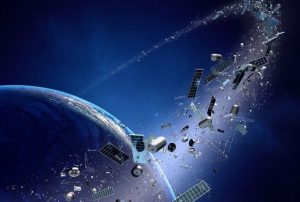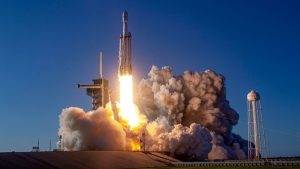Space junk around earth
By Fadhel N. Al-Mousawi
NASA categorizes space junk based on whether it is of natural or artificial origin, with the latter being described as “any man-made object in orbit around the Earth which no longer serves a useful function”. But how does space junk affect the environment and the population? The accumulation of space junk creates an especially catastrophic threat to humanity’s future in the field of space technology because of the increasing risk of satellite collisions and damage. Additionally, the Earth’s ecosystem might be affected (1).

Environmental effects of space debris [2]
Currently, around 2,000 operational satellites are orbiting the Earth, but there are another 3,000 dead ones distributed across space. Additionally, there are millions of smaller pieces that might still be dangerous if they crash with something else, as well as 34,000 pieces of space debris larger than 10 centimeters in size. Everything we send into orbit began on Earth and remains in orbit until it landed. In lower orbits of a few hundred kilometers, certain particles can re-enter quickly. The majority of them burn up, preventing them from reaching the ground. However, debris or abandoned spacecraft can continue to circle Earth for hundreds or thousands of years at higher altitude of 36,000 kilometers, where communication and satellite systems are usually installed in geostationary orbits [3].

Since 1957, satellites have been sent into orbit by over 5,000 rockets [3]
Luckily, space junk currently does not represent a significant risk to our scientific space projects. These spacecrafts must move away from all of this oncoming space junk in order to avoid being impacted by it and perhaps suffering damage. Every year, all satellites, including those on board the International Space Station where some space scientists live, conduct hundreds of collision avoidance techniques.
NASA scientist Donald Kessler first out the concept of the Kessler condition in 1978. According to Kessler, if there is too much waste in orbit, it may cause a chain reaction in which more and more objects crashed and produce additional space debris as a result, turning Earth’s orbit ineffective. The Kessler Syndrome states that when there is an excessive amount of debris in Earth’s orbit, it keeps generating more and more space debris, which is very dangerous for spacecrafts, mission planners and astronauts.
Within 25 years of their mission’s conclusion, the UN requests that all companies take their satellites from space. Numerous researchers from across the world have developed creative methods to address this issue. These include trying to bring down satellites that have reached the end of their lives so they can be removed from space. We might do this by harpooning a satellite, entangling it in a giant net, grabbing it with magnets, resulting in it falling out of space.
Recently, a number of teschenites for clearing space trash have been suggested, including the use of enormous laser devices, self-destructing satellite, and recycling satellite concept. However, even though that many of these proposals aim to encourage the waste to return to Earth and end up in our oceans, which already face numerous problems. The scientists are still looking for a suitable approach to clean up the waste in the space and get rid of it responsibly and sustainably [4].
References
- Space Debris and Human Spacecraft. 2022; Available from: https://www.nasa.gov/mission_pages/.
- What is Space Junk and How Does It Affect the Environment? 2022; Available from: https://earth.org/.
- Natural History Museum. 2022; Available from: https://www.nhm.ac.uk/.
- 9 Concepts for Cleaning Up Space Junk. 2022; Available from: https://www.treehugger.com/.


























































